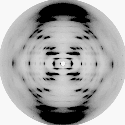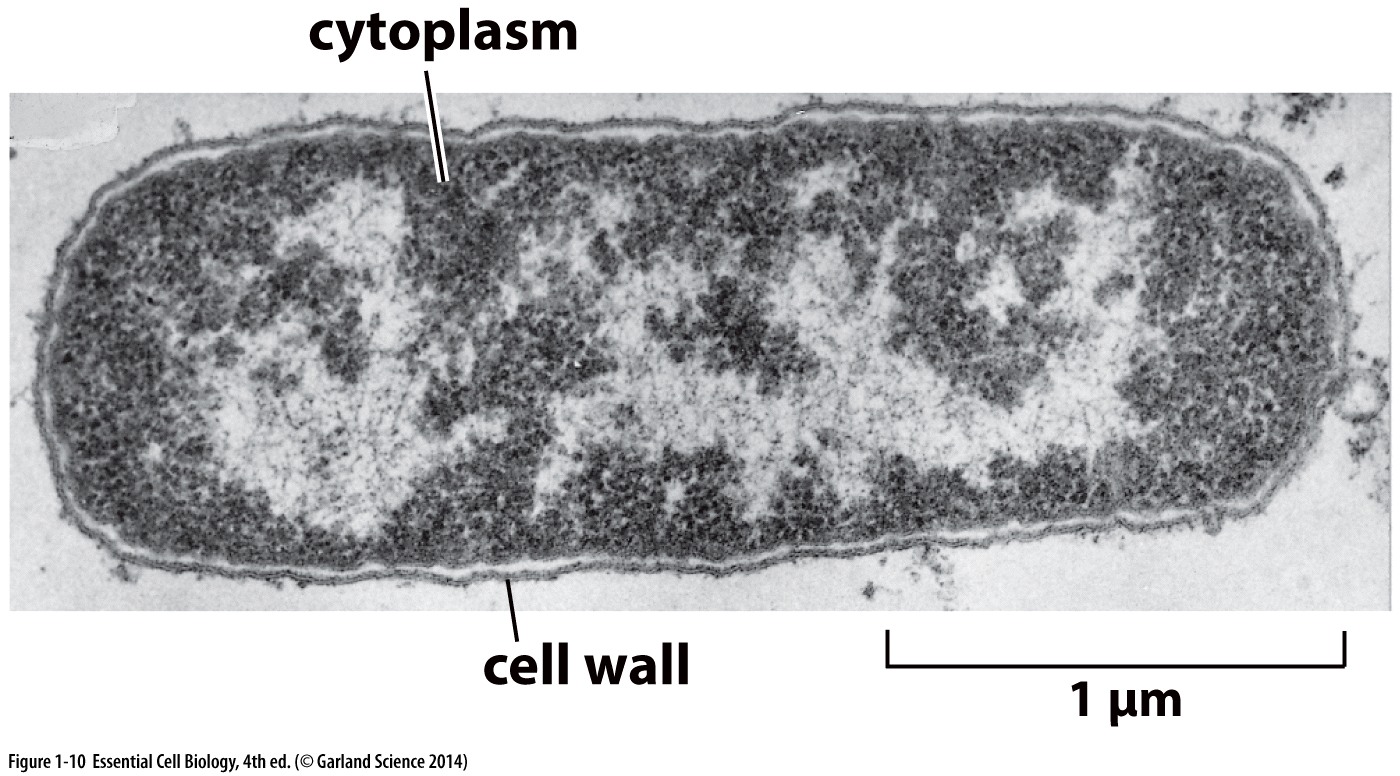Bil 255 -
Cell and Molecular Biology...
structure, function,
& the molecules of cells |
|



next
|
Drs.
DiResta
and Mallery
Spring and Fall Semesters
|
C1... pages 1-36
Fundamentals
of CMB...
The goal of cell & molecular biology
is to understand the molecular basis of cell function
and the fundamental cellular processes ranging from cell respiration to cell division.
EXPERIMENTAL APPROACHES used in studying CMB are multidisciplinary & include:
biochemical
& biophysical experimentation; molecular & genetic manipulation
of cellular functions at
the molecular, cellular
and organismal levels.
Thus Life is more than
inanimate individual molecules,
Life is COMPLEXITY...
Modern day CMB must account for Complexity
and how Complex Systems
act.
Complexity: is
where a system has so many parts that the system...
1. may interact in many different ways*,
so that the whole takes on a realm of its own
2. can adapt and evolve to changing conditions
3. is prone to sudden and seemingly unpredictable changes
4. its collective characteristics cannot easily
be predicted from its sole components
5. so that the WHOLE
IS GREATER than and
often significantly different than
the SUM of its PARTS...
Life exhibits EMERGENT
PROPERTIES.
A new level of emphasis in CMB
has been SYNTHETIC BIOLOGY with one goal being:
Can we construct a living
cell 'off
the shelf' if we
know ALL its molecular parts ???
"What
I cannot create, I do not understand."
Richard Feynman
(1988)
but, we must begin our study of Life and the Cell somewhere so let's undertake
a look at the
individual components making up a Complex System of a
Cell & Life.

CMB is
rooted in the major theories of Biology...
1.
Evolution
(Darwinian Natural Selection).
u
changes in the allele
frequency of a
population's gene pool
from one generation
to another generation…
as influenced by the environment
and habitat,
which enhances a gene pool's reproductive
fitness,
leading to progressively better
adaptation via
Natural Selection
u
these principles can lead to
morphological
change via natural
selection* are
applied
repeatedly over millions of cell
generations, & are basis of
evolution.

|
2.
Cell Theory... "All
living things are made of Cells",
"a cell
is a small, membrane bounded
compartment, filled
with concentrated aqueous
solution
of reactive chemicals...
a collection of
catalysts that,
acting as a
group, causing complex series
of chemical
reactions, which end
up replicating all of the
catalysts in the set, and that divides
into two sets, & the
process repeats with each
daughter set ".
"A living cell is
a magic puzzle box full of
elaborate and changing
molecules".
Delbruck (1949)
- a father of molecular biology
and 1969 Nobel
Laurate.
 1839 - Early proponents of a Cell
Theory were... 1839 - Early proponents of a Cell
Theory were...
Matthias
Jakob Schleiden
(1822-1881) -
pic & Theodor Schwann
(1810-1882) - pic
1855 - pathologist Rudolf
Virchow posed a
maxim "Omnis
cellula e cellula"...
that every cell arises from
another cell.
1863
►Charles
Darwin (1809-1882)... hypothesizes
that "probably all the origins
beings which
have ever lived on this Earth have
descended from some primordial form
into which life was first
breathed".
i.e.,
cells living today can trace their
ancestry back to ancient times...
so there must be a common ancestral
cell.
LUCA*
=
Last Universal Common
Ancestor
is
the hypothesis that all organisms on Earth
have descended from a
common
ancestor...
a common ancestral cell or gene
pool,
selected for its better
fitness through the processes of
evolution, via mechanisms of Natural
Selection.
premise:
LUCA is a single cell that lived perhaps
3-4 billion yrs ago from which ALL LIFE
has since evolved.

|
Consequences of
Cell Theory:
Cell
Theory replaces
Vitalism which was
a mainstream
scientific thought of 18-19th
century,
Vitalism
was
the school of scientific
thought, that attempted to
explain the nature of life
as
resulting from a
"vital
force", peculiar only
to living organisms and
different
from all other
physical forces found outside
living things; but Cell
Theory prompted...
'Mechanists' - believed life was a
mechanical
process, a theory that
all natural phenomena
can be explained entirely by
LAWS of CHEMISTRY & PHYSICS
without a
"vital force".
a modern
interpretation:
"There are no
laws of Chemistry or Physics unique
only to the Living Condition."
from the Cell Theory we see that
the CELL is
FUNDAMENTAL
UNIT of ALL
LIFE...
and
though MAN
&
MOUSE* have very
different anatomical
structures,
their cells & organelles
are basically the same, and
on a letter-for-letter
basis about 80-85% of human
genes have counterparts in
the mouse...
► thus studying
cells in
one
organism
has direct application
to other
organisms.
|
TheTree
of
Life &
Cell Typing
|
 |
(refer to
chapter 1) |
CELLULAR ORGANISMS
have been grouped
together by a binomial
taxonomic system
such as...
Kingdoms*
based upon morphology...
(descriptions
& pic 1st by
Carl Linnaeus)
however,
CMB
using a molecular
approach
has added to our taxonomic
pattern...
today we have
a higher order than
Kingdom...
3
DOMAINS*
NAS-8
EUBACTERIA
- true
bacteria
ARCHAEA
- ancient
prokaryotes
EUKARYA
- modern
eukaryotes
Carl
Woese, (7/15/1928-12/30/12
pdf ) knew ribosomes
& rRNA are
found in
all cells.
Thus,
if
all cells are derived from a
common ancestor[NAS-1],
then their
nucleotide
sequence changes
over time may
indicate divergence (loss of
relatedness) through
phylogeny (family
trees).
Woese
compared nucleotide sequences
of the small* rRNA
subunit*
from
many species...
protocol*: By
comparing similar & divergent
sequences, this
new RNA phylogeny
tree
produced a tree with only 3 distinct
branches or
Domains (ecb
fig 9.23*)
Table*:
of some key differences between ARCHAEA,
BACTERIA,
& EUKARYOTES
|

|
Genome sequencing
indicates that many organisms contain
genes from many sources,
...including VIRUSES,
...maybe there
should be a 4th Domain - Origin
of
Viruses.
|
another way of
distinguishing cells has been...
STRUCTURAL
CELL TYPING.
within the 3 domains
there are only 2 successful
Structural Plans of Cellular
Organization
distinguished
primarily by size
& type of internal
structures (the organelles)
they possess:
E'douard Chatton (FR
biologist) in 1925 was 1st to
characterize differences between
prokaryote & eukaryote systems
of cell organization.
Chatton, E.
1925. Ann. Sci. Nat.
Zool. 10e serie, 1-84.
1. PROKARYOTE - "pro" =
before + "karyon"Gk-kernel
(or nucleus)... includes
archaea
bacteria and
today's eubacteria,
including
cyanobacteria (blue
green algae)... [pic*];
includes members of the original
Kingdom Monera (now 2 Domains Archaea
& Eubacteria),
are microscopic single-celled
organisms, often lacking
membrane-bound organelles.
Characteristics:
[√often defined by differences to
the other cell
plan]
3 main cell
shapes in prokaryotic
cells:
cocci,
bacilli, spirochetes*
genes contain
"naked DNA" -,
i.e., DNA with no proteins - chromosomes?*
they
lack
significant internal
membrane bound organelles
have a little internal
compartmentation fig
1.2a*
vs.
a eukaryotic cell
typing
can be via
differential Gram
Staining* of bacterial
cell wall
sizes - 0.1
to 10
µm
diameter (100nm
to 10,000nm = 5 to 500
ribosomes)
largest bacteria
discovered*
|
 |

|
2. EUKARYOTIC: [eu -true
karyon -nucleus...]
cell plan of multi-cellular
organisms...
eukarya:
includes the algae & protozoa, fungi & slime molds, & all plants
& animals,
[ i.e., 4 of the 5
Kingdoms
:
Protista, Fungi, Plantae, &
Animalia ]
Common
CHARACTERISTIC of EUKARYOTES:
nucleus - 'may have
been single greatest step in
evolution of higher life forms
'
genes - in "chromosomes*"...
colored bodies made of
DNA + histone
proteins
karyotypes & chromosome
locales*
& chromosome
activity via locale*
contain much more
DNA
(1,000x more) than
prokaryotes.
extensive internal
membranes -
endomembrane system* (nuclear memb + ER
+ Golgi + vesicles)
presence of more flexible "walls
= ecm*"
(allows
endocytosis/phagocytosis)
presence of organelles-
significant internal
compartmentalization of function
ORGANELLE - a subcell part
that has a distinct metabolic
function
ecb/4e Panel 1-2a:
schematic drawings of animal
& plant cells
presence of cytoskeleton*
(provides
framework to be larger &
provide form/shape)
reproduce
sexually
usually
larger -
cell volume
10X > than bacteria - size 5.0
to 20 µm diameter
|

|
IGNORE ALL MATERIAL BELOW
THIS POINT IN THE CLASS PRESENTATION
On Dec. 3, 1967 Dr. Christian
Bernard -
of Cape Town, South Africa,
using techniques
pioneered at Stanford University
by Drs. Norman Shumway and Richard Lower,
performed the
first successful
heart transplant
at Groote Schuur Hospital."
The patient, Louis
Washkansky, lived 18 days and
died of a lung infection.
back
n
What
types
of
cells
does CMB study ?
Molecular
Life seems to
occur at
succeeding
level of
complexity:
1. Biochemical
(as in
viruses) ...
DNA
-->
RNA
-->
Protein
[polymers]
2. CELLULAR
(as single
celled
organisms)...
bacteria,
protozoa, HeLa
cells, etc
3. Multicellular
aggregations
...
organs &
organisms
(plants &
animals)
4. Entities
...
Humans
- spirit,
creativity,
consciousness
|
►
Model Organisms* cheap,
plentiful, prolific reproducers,
with simple genomes
& unique properties for
practical research
analysis:
[see pg 26 -35]*
CMB's
research model organisms have
often been used to study gene
expression:
|








